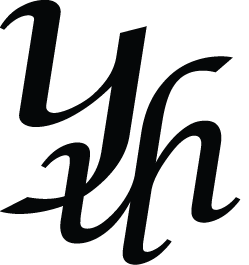“Kinmon” Stamp
While I stayed in Japan, I participated a workshop to create “Kinmon” stamp at the Sen-oku Hakuko Kan museum in Roppongi. At the time of my visit, this museum showcased the arts collected by Shunsui Sumitomo, a business mogul, including ancient Chinese bronze ware, as well as 3-D digital contents made by using the latest cultural property technology. Through the bronze ware exhibition, I had a chance to review the transition of times, people’s living conditions, and the evolution of letters. Also, I became to understand that the digitalization deeply pervaded into cultural properties.
Kinmon letters are inscribed on those bronze ware. The letters 3,000 years ago was developed into kanji letters we use today. I wanted to carve my name, Yuh, onto a stamp in the workshop. However, the particular letter doesn’t exist in the list of Kinmon letters, so I had to create a new letter by using two Kinmon letters, each of which means human and anxiousness. The letter Yuh has many strokes, so a part of the character chipped while casting bronze into a mold. But I wasn’t disappointed about that at all because I had so fun. I was completely dragged into the charm of Kinmon, and the time passed in a flash.
Let’s decipher Kinmon here.
Figure 1 illustrates a shape of a human.
Figure 2 shows a human who stands in sorrow, raising his hands in front of his face.
Figure 3 is the combination of the two letters above, and that’s the letter Yuh. The modern kanji for Yuh means “gentle” or “superior”. It must have etymologically been developed into a mindset to considerate or care people.
On the other hand, as seen in figure 4, when the letter in figure 2 is combined with a element meaning “hand”, it creates a letter Joh, which means “to confuse”. I can visualize a scene that someone stirring up things by hands.
The meanings of the two letters differ so much just by replacing elements, human and hand.
I thank my father to choose the kanji Yuh for my name.
Kanji is really interesting. I remember the excitement when I started studying kanji in textbooks at the elementary school.
Kanji can indicate abstract concept; Kanji can be pictogram; Kanji can be phonetic; and Kanji can signify meanings.
This is the year of rabbit. It’s the 40th year called “Mizunoto U”, according to the Chinese zodiac that goes around 60 years and uses a combination of 10 trunks and 12 branches to count years.
I looked into Kinmon letters of Mizunoto U. Mizunoto refers to a criss-crossed wooden pedestal stabilized to the ground, as shown in figure 6, and U indicates a double door as in figure 7.
The two letters are combined to signify “the time of blooming new possibilities”. So if you prepare properly and develop thoroughly, everything would go well this year. But if you make a mistake, it would cause confusion and turns to a rocky year. Rabbits move fast and get information quickly. Don’t be in haste yet be steadfast.
In the beginning of the year, I tend to think about my ancestors, look back past, and wish everyone’s safety, making myself busy for doing that.
I wish you all a wonderful year in 2023 from the bottom of heart.
The theme of the scarf of this month is Ears of a Rabbit.
Rabbits’ ears symbolize a great ability to collect information about incidents and rumors people usually don’t know. Also, they connotes Jigoku-mimi (hell ears), which refers to the ability to remember everything they hear or to quickly find secrets of others.
I am not good at those things actually, though [Phew!]
Yuh Okano.


